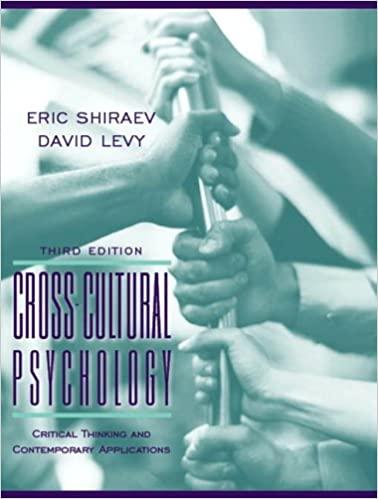Question
1. What insight do you appreciate in your peer's discussion of bias and/or intersectionality? 2. What contribution can you make to your peer's discussion regarding
1. What insight do you appreciate in your peer's discussion of bias and/or intersectionality?
2. What contribution can you make to your peer's discussion regarding bias and/or intersectionality?
Peer one below
How does the exploration of bias in the module overview and resources influence your thoughts about diversity?
While diving into the bias section of our module and thinking of myself I definitely do not hide the explicit bias that I have. Biases with my sports teams, music or food preferences are not hidden. I try to be aware of my implicit biases so they don't become negative thoughts that turn into behaviors, and I am aware that other people may have other thoughts or implicit biases as well. Being able to accept, be educated about that keeps the world around me diverse.
How does thinking about intersectionality bring you to a new awareness of bias?
Weighing 2 things as equal when they really are not is being bias to one, and that is not fair. We had a great example that was given in the Ted Talk (Crenshaw, n.d.) about the attention given toward black men murdered by the police and black woman murdered by the police. The only missing ingredient was the fact that they were women which is bias and intersectionality, a subject I was well aware of but a new term that I have now connected it to.
Peer two below.
The presentations on implicit bias and explicit bias detailed the many reasons why there continue to be problems with truly respecting and recognizing diversity. For example, women are still underpaid in many workforces, but management may not realize it (implicit bias). Implicit bias can also occur even if consciously you think you are following a different path. We all receive influences, good and bad, to view people and things in different ways, which sometimes show up later in our perceptions, forming our biases. Unfortunately, explicit biases occur frequently as well --- more recognizable, but not always less harmful. Thankfully, educating ourselves about these biases helps us to recognize them more closely and to be more mindful of how our actions affect others. Learning about the combined approach of intersectionality, which refers to overlapping social issues and the cross-section or "intersection" of biases and discrimination that people endure, opened my eyes to the many different types of prejudices that occur. Kimberl Crenshaw gave an example of a black woman right in the middle of this "intersection" because she experienced both racism and sexism from a company. She was one example, but intersectionality can exist for many people, such as gender and sexuality, or race and disability.
Step by Step Solution
There are 3 Steps involved in it
Step: 1

Get Instant Access to Expert-Tailored Solutions
See step-by-step solutions with expert insights and AI powered tools for academic success
Step: 2

Step: 3

Ace Your Homework with AI
Get the answers you need in no time with our AI-driven, step-by-step assistance
Get Started


